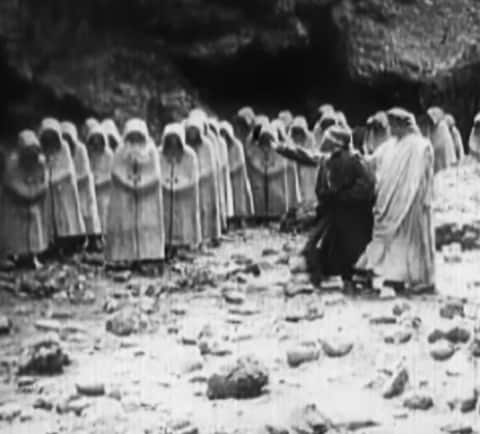On Sept. 21, as part of the Riversdale Silent Classics series, the Roxy Theatre presented a unique audiovisual experience based on one of the Western canon’s longest-lasting and most haunting works.
L’inferno, the 1911 adaptation of the third part of Dante Alighieri’s Divine Comedy, in which the reader embarks on an odyssey through the nine circles of Hell alongside Dante himself and his guide Virgil, is the first full-length Italian feature film ever made.
A decade of film dominated by spandex-clad CGI superheroes flailing around on screen proves that the comic book will march into the foreseeable future as the go-to source for blockbuster Hollywood narratives. Yet, pulling off a satisfactory adaptation of a literary masterpiece still remains the ever-elusive white unicorn of the film industry.
To sate one’s appetite for a blockbuster crossover of the literary and the visual on the big screen, it appears that the answer may lie in looking backwards — to something that has already stood the test of time. Last Thursday, nearly a hundred Saskatonians were lucky enough to share in viewing such a work.
For the entirety of its 68-minute running time, L’inferno is an endless barrage of experiments with perspective and light that is mind-bogglingly avant-garde for its time and place of origin in pre-fascist Italy.
Despite the religiosity of its subject-matter, the film is a grotesquerie in every way — most especially in its treatment of light. The frame is often negatively polarized, thus inverting the saturated colour-scape of the image on the screen and subverting the viewer’s expectations and sense of spatial orientation.
There are often half-formed prosthetic monsters and slithering bodies popping in and out of oblivion. In the final circle of Hell, a giant Lucifer — a magic-trick of perspective — gnaws on the head of Judas Iscariot, whose back is bloody, raked and flayed.

A still frame from L’Inferno from 1911.
As part of the Riversdale Silent Film Series, movie-goers were also privy to a live-soundtrack treatment of L’Inferno by keyboardist Maurizio Guarini of the Italian progressive-rock band Goblin, a group which has achieved international recognition for their soundtrack work on such films as Suspiria and Shaun of the Dead.
The eerie trancing and droning of Guarini’s keyboard, as unsettling as the fantastical and disturbing landscapes, lulls the viewer into a place of dreadful torment — the dissonant notes absorbing them in a Hell of sound and image. The imagination seems to leap out of the mind and into the world being projected on screen.
Film doesn’t need fancy CGI green-screen scenescapes, nor is its essence manufactured in a room where an audiovisual engineer spends 18 dark months animating a scene with the latest and greatest software. Film needs two things: light and perspective, and L’inferno is the only case study needed in order to understand why.
The hellish analog visuals of the original film, updated with a dissonant new electronic soundtrack, make for an unforgettable experience. Dante Alighieri said it best: “Abandon all hope, ye who enter here.”
—
James Morin
Photo: Public Domain / L’Inferno